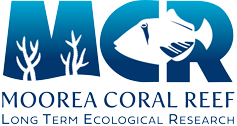Year:
2024
Authors:
Source:
Bulletin of Marine Science
Abstract:
On shallow coral reefs, coral bommies create patchy communities where interactions among patches are likely to affect a variety of ecological features. Here, we describe bommies in the back reef of Moorea, French Polynesia, and evaluate the role of select factors in determining their size, shape, and distribution. We tested the hypothesis that the distribution and growth of corals varies across the surface of bommies (i.e., north, south, east, and west sides), and therefore might play a role in determining bommie shape and their propensity for fission and fusion. Bommies were elliptical in planar shape, with their long axes parallel to ambient flow and perpendicular to the direction of offshore waves. Porites spp. and Pocillopora spp. were the most abundant corals, and they were uniformly distributed over the surface of bommies. During April 2022, small colonies (≤ 4 cm height) of Pocillopora spp. grew at similar rates on the north, south, east, and west sides of the bommies, among which integrated seawater flow during the experiment was similar. These results suggest that the contemporary growth and distribution of corals is unlikely to play a strong role in determining the features of present-day bommies. Evaluating how environmental conditions mediate the structure of coral bommies in shallow habitats will help to understand whether habitat mosaics can mediate coral reef resilience in the Anthropocene.
Volume:
101
Issue:
1
Pages:
77-90
Publication Type:
Journal Article



